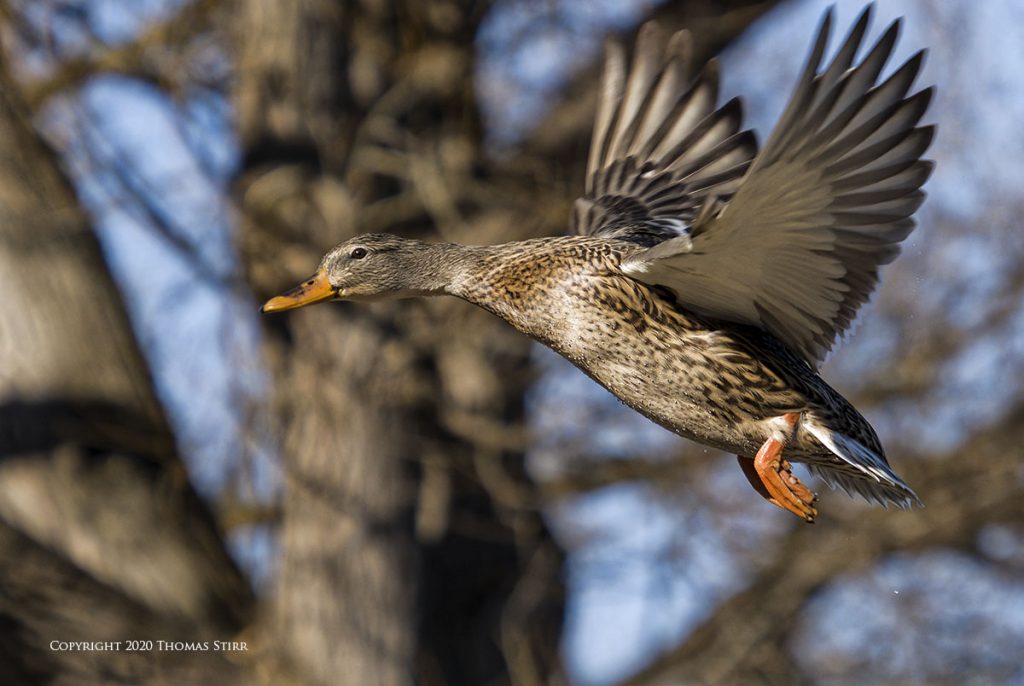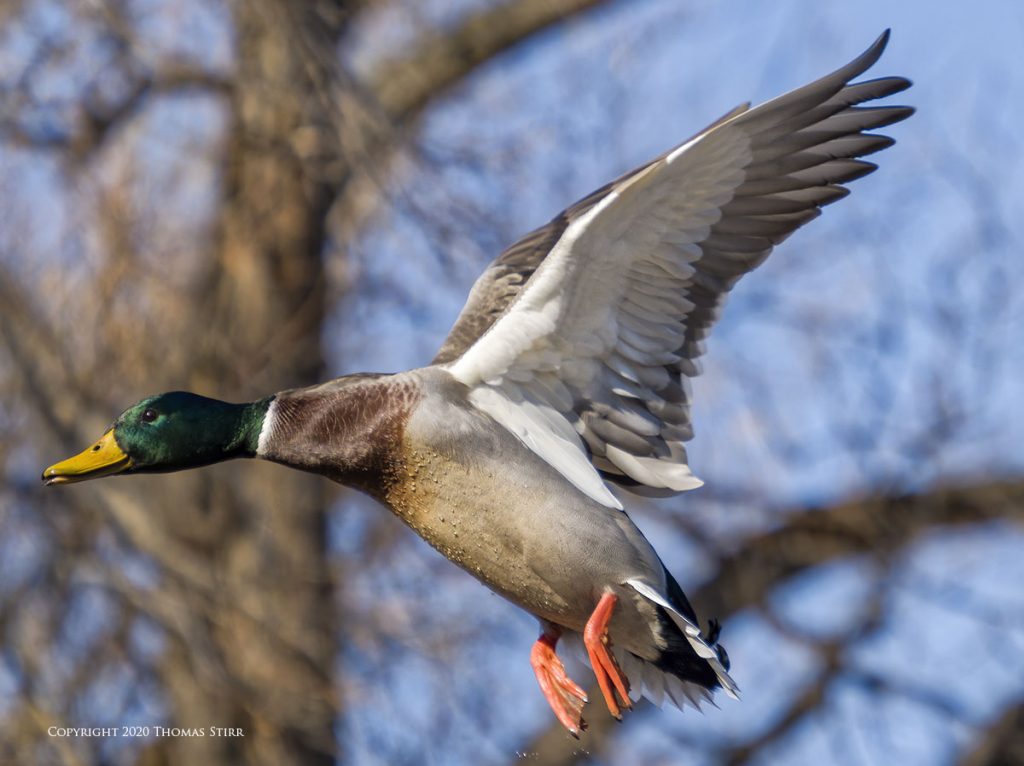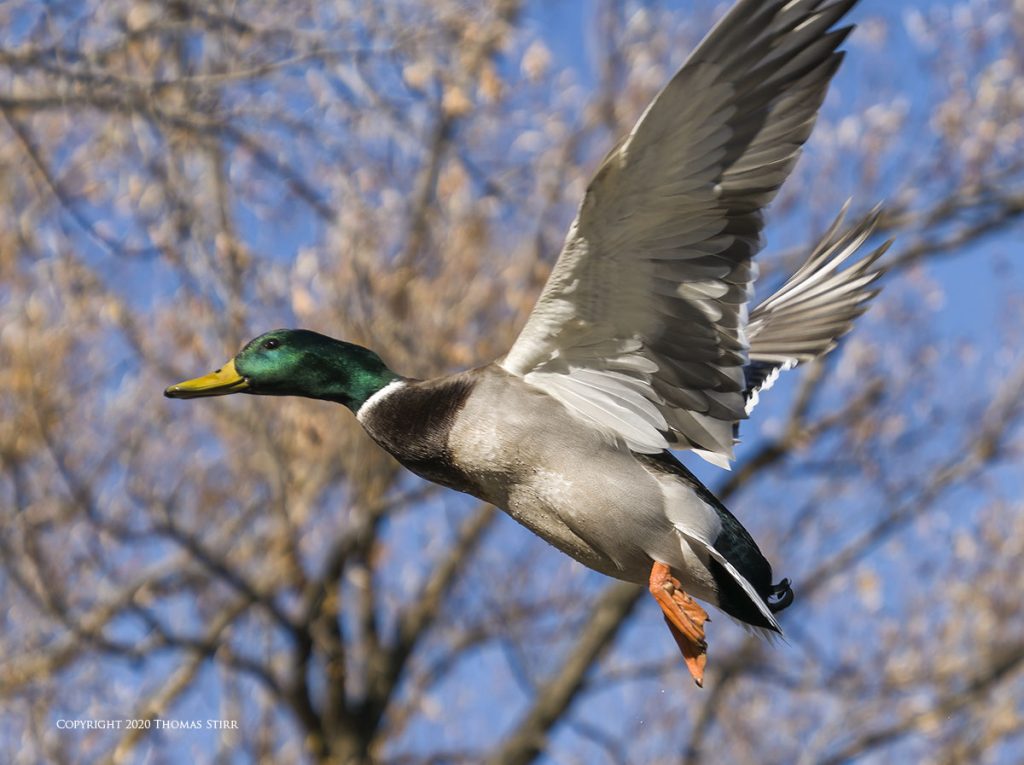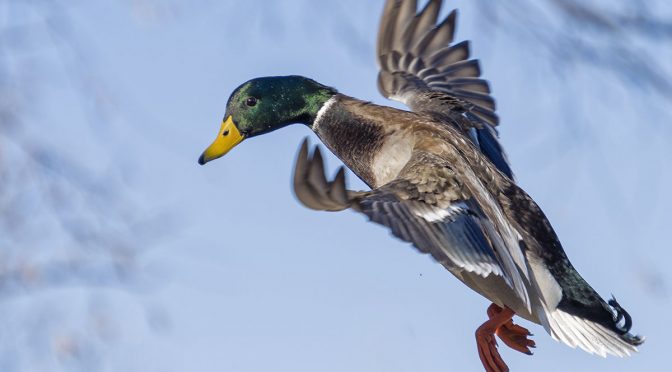I went out on Saturday to challenge myself photographing ducks in flight… and I ended up with the best photography problem. Over the past number of years I’ve done this particular ducks in flight test a number of times with different camera gear. It involves situating myself fairly close to a large group of ducks, then photographing individual ducks as they take flight, moving right to left in my viewfinder.
NOTE: Click on images to enlarge.

The location for this test is at the boat ramp at Grimsby Harbour. I position myself sitting on a large cement shore break roughly 7 to 10 metres (~23 to 33 feet) away from the typical flight paths the ducks use. The birds will congregate in the water, on some rocks, and on the cement at the bottom of the boat ramp.

Over the years the ducks have learned to wait in this area for visitors to the harbour to feed them. Once visitors arrive with food, bedlam ensues as the ducks take flight to muscle their way to the food. Hungry ducks are motivated! Suffice to say the in-flight action happens quickly.

The objective of the test is to photograph individual ducks in flight after they either leave the water, or take flight from the rocks or bottom cement surface of the boat ramp.

It typically takes 2-3 seconds from the moment a duck takes flight until it lands at the food source farther up the boat ramp. During this time, I need to isolate a duck in my viewfinder, acquire focus on it, pan with it as it is flying, and capture some photographs.

To be honest I’ve never had that much success with this particular challenge in the past. I’ve used full frame, APS-C and 1″ sensor cameras and I’ve always come home with just a smattering of usable images.

Even though I’m not rewarded with an abundance of usable images, this is a great test of my eye-hand coordination and the auto-focus performance of my camera gear.

I had not tried using my Olympus gear with this challenge, so I grabbed my E-M1X fitted with the M.Zuiko PRO 40-150 mm f/2.8 and MC-20 teleconverter and headed off to the boat ramp. I ended up with the best photography problem a person can have… I had too many keepers! This created a lot more work in post than I was anticipating, and it also made selecting photographs for this article difficult.

To capture all of the photographs in this article I used the Olympus Cluster Area C-AF setting on my E-M1X. I shot in Manual mode with Auto-ISO, using silent shutter at 18 frames-per-second.

Until the Bird Detection AI is available for my E-M1X (coming on December 2, 2020) I will be using Cluster Area C-AF for the majority of my birds-in-flight photography. Now that I am becoming very familiar with how it performs I love using it!

As you can see from the photographs in this article I faced a range of backgrounds. If I acquired focus on the duck early enough I often was able to frame it against a monochromatic sky. As expected this yielded a lot of keeper images.

What surprised me was that I also got a very good selection of ducks up against very busy backgrounds. As folks who photograph birds-in-flight appreciate, this can be particularly challenging for the auto-focusing system of a camera.

I don’t know why I was surprised with the performance of my E-M1X during this ducks in-flight challenge. Over the past 18 months this camera has continually created the best photography problem for me numerous times by delivering a higher than expected number of keepers.

How much more effective was my E-M1X using Cluster Area C-AF than other cameras that I’ve used in the past when doing this ducks in-flight challenge? I would conservatively estimate at least 600% more keepers. That’s a best photography problem that I love to experience!
Technical Note
Photographs were captured hand-held using camera gear as noted in the EXIF data. Images were produced from RAW files using my standard process.

How you can help keep this site advertising free
My intent is to keep this photography blog advertising free. If you enjoyed this article and/or my website and would like to support my work, you can purchase an eBook, or make a modest $10 donation through PayPal. Both are most appreciated. You can use the Donate button below. Larger donations can be made to tom@tomstirr.com through PayPal.

Word of mouth is the best form of endorsement. If you like our website please let your friends and associates know about our work. Linking to this site or to specific articles is allowed with proper acknowledgement. Reproducing articles, or any of the images contained in them, on another website or in any social media posting is a Copyright infringement.
Article and images are Copyright 2020 Thomas Stirr. All rights reserved. No use, duplication or adaptation of any kind is allowed without written consent. If you see this article reproduced anywhere else it is an unauthorized and illegal use. Posting comments on offending websites and calling out individuals who steal intellectual property is always appreciated!


Great pictures! I also tried the cluster autofocus on birds on prey this weekend. It seems to work better the the 5×5 setting.
I have one question: How can I determine the distance to the bird (subject)? Is the a software?
Hi Johanne,
I’m glad to hear that Cluster Area AF worded for you! Some cameras estimate the subject distance with their EXIF data. I can view this information when I view my files in Windows Explorer.
Tom
Stunning captures in this blog and interesting to hear that you’re getting far better keeper rate using the cluster method of autofocus tracking. Since watching Robin Wong’s video I have also adopted this method of photographing BIF and can confirm it works well for me too.
I currently use the E-M1 Mk III and was a bit disappointed that the upcoming AI Bird Detection upgrade to the E-M1X will not also be coming to the E-M1 Mk III. I look forward to reading how you find it performs in the future.
Hi Robert,
I’ve been hearing from a number of readers that Cluster Area C-AF is working well for them. Glad to hear that parallels your experience. While I don’t have a lot of experience with the other AI subject tracking modes in my E-M1X, when I have used them they have been excellent… so I’m expecting the same type of performance from the Bird Detection AI function.
I think the TruePic IX processor in the E-M1 Mark III has enough added horsepower to handle Live ND and Handheld Hi Res… but likely not enough to process the data from the AI functions. In the E-M1X one of the dual processors is completely dedicated to processing image data. It would appear that the hardware in the E-M1 Mark III just can’t handle the data processing for AI… much like the E-M1 Mark II will not be able to handle Live ND or HHHR. Hardware does have limitations.
Quite a while ago I was one of a number of photographers that Olympus reached out to in order to get feedback on desired Firmware enhancements. Bird Detection AI was on the top of my list that I provided to the company. I assume many of the other photographers provided the same feedback. I’m thrilled that this is going to be available soon. You can rest assured that as soon as I’ve updated my E-M1X bodies I’ll be out in the field testing it!
Tom
Thanks Tom,
I think I will be considering buying an E-M1X if the AI Bird Detection system proves effective and sufficiently worthwhile.
Bob
Rest assured that I will be giving it a good workout!
Tom